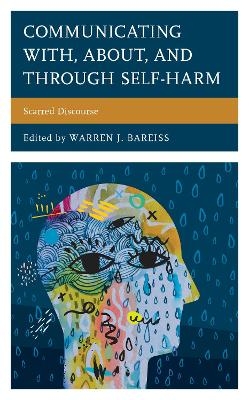
Communicating With, About, and Through Self-Harm
Lexington Books (Verlag)
978-1-4985-6305-5 (ISBN)
Non-suicidal self-injury (NSSI) is the deliberate harming of one's body without suicidal intent. NSSI tends to be secretive, often involving cutting, bruising, or burning on hidden parts of the body. While NSSI often occurs among adolescents, it is not limited to that age group. Communication and NSSI intersect in many ways, including conversation among family members, consultation with healthcare providers, representation in the media, discourse among people who self-injure, and even communication with oneself. Each chapter in Communicating With, About, and Through Self-Harm: Scarred Discourse addresses a different context of communication crucial to our understanding NSSI. An international group of clinicians and communication specialists describe, analyze, and explain how NSSI is communicated about, what NSSI is communicating, and how can we do a better job in communicating with others about NSSI. This book’s fundamental purpose is to empower individuals who self-injure as well as their families, friends, healthcare providers, and communities to better understand and deal with NSSI and the pressures that cause it.
Warren J. Bareiss is associate professor of communication at the University of South Carolina Upstate.
Acknowledgements
Prologue
Chapter 1: Non-Suicidal Self-Injury: Communicating in Chaos
Marta Carvalhal, LISW-CP and Nicole S. Parrish, M.D.
Chapter 2: Self-Regulatory Communication in the Treatment of Self-Injury: Development and
Maintenance of Therapeutic Rapport
John L. Levitt, PhD, FAED, FIAEDP, CEDS-S
Chapter 3: Novel Online Daily Diary Interventions for Nonsuicidal Self-Injury: A Randomized Controlled Trial
Jill M. Hooley, Kathryn R. Fox, Shirley B. Wang, and Anita N. D. Kwashie
Chapter 4: Sibling Relationships of Female Adolescents with Nonsuicidal Self-Injury Disorder in Comparison to a Clinical and a Nonclinical Control Group
Taru Tschan, Janine Lüdtke, Marc Schmid, and Tina In-Albon
Chapter 5: Using Micro-Longitudinal Methods to Examine Social-Communicative Functions of Self-injury in Everyday Life
Brianna J. Turner and Carolyn E. Helps
Chapter 6: Discursive Tensions and Contradictions: A Cultural Analysis of an Online Self-Harm Forum
Mike Alvarez
Chapter 7: “Can Airport Scanners See Scars?” An Interpretive Analysis of Self-Injury Narratives
Warren Bareiss
Chapter 8: Fighting the Self: Inter- and Intra-Personal Communicative Violence in Chuck Palahniuk’s Fight Club
Lisann Anders
Chapter 9: A Systematic Review of Media Use and Non-Suicidal Self-Injury Behaviors
Shuang Liu, Ph.D. and Yanni Ma, Ph.D.
Chapter 10: The End (a.k.a The Beginning)
Warren Bareiss
About the Contributors
| Erscheinungsdatum | 10.05.2021 |
|---|---|
| Reihe/Serie | Lexington Studies in Health Communication |
| Co-Autor | Mike Alvarez, Lisann Anders, Warren J. Bareiss, Marta Carvalhal |
| Verlagsort | Lanham, MD |
| Sprache | englisch |
| Maße | 162 x 241 mm |
| Gewicht | 476 g |
| Themenwelt | Sachbuch/Ratgeber ► Gesundheit / Leben / Psychologie |
| Geisteswissenschaften ► Psychologie | |
| Sozialwissenschaften ► Kommunikation / Medien ► Kommunikationswissenschaft | |
| ISBN-10 | 1-4985-6305-8 / 1498563058 |
| ISBN-13 | 978-1-4985-6305-5 / 9781498563055 |
| Zustand | Neuware |
| Haben Sie eine Frage zum Produkt? |
aus dem Bereich


